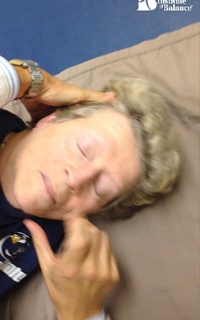
VIDEO – BPPV-PC Nystagmus: Watch the Contralateral Eye
Published on: noviembre 19, 2013
In this video, the patient is placed in a left side-lying – modified Hallpike with left ear down. You will clearly see the upbeat torsional nystagmus (stronger vertical component than torsional as is commonly seen) associated with the left ear PC-BPPV. When watching for BPPV mediated nystagmus, regardless with direct observation or with VOG/VNG, it is helpful if you will watch the contralateral eye (in this video- it is the right eye). The VOR is cross-wired (see the accompanying diagram) and the strongest, clearest nystagmus will be seen in the opposite eye to the test/treated undermost ear. For patients with heavy/droopy eyelids or those who are hesitant to keep their eyes open (vision enhances the hallucination of vertigo), it is easy to lift the eyelid of the contralateral eye to easily visualize the nystagmus. This is not uncomfortable to the patient and will be very helpful, especially for those clinicians without VOG/VNG who cannot replay a recording of the nystagmus.
References:
Gans RE, Vestibular Rehabilitation in Textbook of Vertigo: Diagnosis and Treatment, F. Dispenza and A. DeStefano (Eds.), Jaypee Medical  Publishing, 2013
Publishing, 2013
Robert RA and Gans RE, Nonmedical Management of Positional Vertigo, in Balance Function Assessment and Management, Jacobson GP and Shepard NT, Plural Publishing, 2008